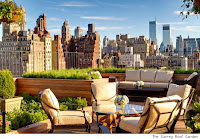Synergy, Leverage, Though Leadership, Strategy, Transformational change, ...these are used and abused words in everyday corporate life. More often than not when the word strategy is used the speaker does not actually refer to strategy in its true sense of the word. Sometime then mean tactics, action plan, thinking, effort, intention...but rarely real strategy.
So I though maybe would be interested to have a quick look at what strategy is and what it is not in the context of tourism development.
Strategy:
Eid Mubarak.
So I though maybe would be interested to have a quick look at what strategy is and what it is not in the context of tourism development.
Strategy:
- can be a) evolutive or b) visionary but both are based on a clear sense of how I see myself or my company in quite some time, say 5-10 years. Strategy is the answer to the question of Where I want to be? and How am I going to get there? This can be answered through a) a precise plan which has a shorter horizon and follows the direction of the vision (but is not laying down the route all the way through) - which is an evolutive approach or b) can be a bit less detailed but marking the milestones all the way till the endorsed vision - visionary approach.
- implies more losers than winners on the short term (1-3 years) and more winners then losers on the long term (5+ years). In other words strategy is focus. Spreading thin and being everything for everybody is not strategy. It can work in certain context but it's very tactical and certainly not achieving long term impact.
- is discipline. For the reasons above strategy (especially if is wrongly managed) tends to be annoying for the environment, it can come across as stubbornness. Think of all the visionary people who have achieved long term impact, they all had their doubt war to fight, and those who stayed afloat marked their names and thinking.
- is a living process. Especially the evolutive approach assumes a constant revision and adjustment, but along the same lines. And this is the key, you can adjust and be all over the place, or you can adjust by keeping your course.
- is sustainable. It can be executed and followed systematically without special circumstances that are at risk.
- can be expressed simply in few words and few numbers. The more you need to talk to explain your strategy the less are your chances of execution.

- a good speech or a circular the top executives send around on all staff emails.
- a document prepared by expensive consultants, approved and then forgotten.
- a catchy tagline or mission statement.
- a recipe or sheet music that tells you what you need to do to comply with the plan.
Eid Mubarak.





























